You can trust Cyclingnews
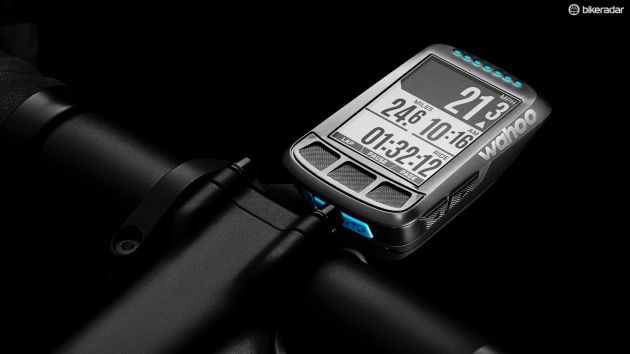
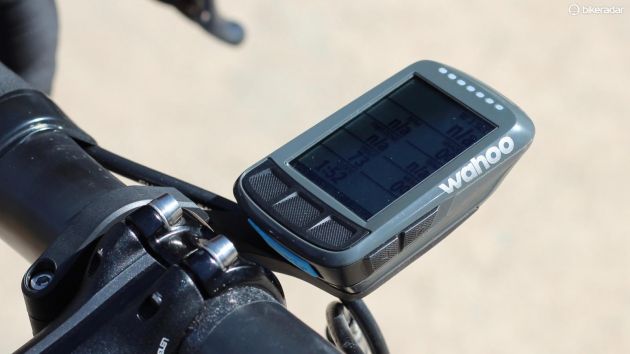
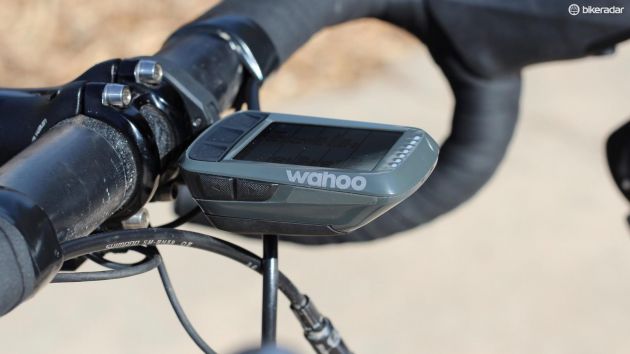
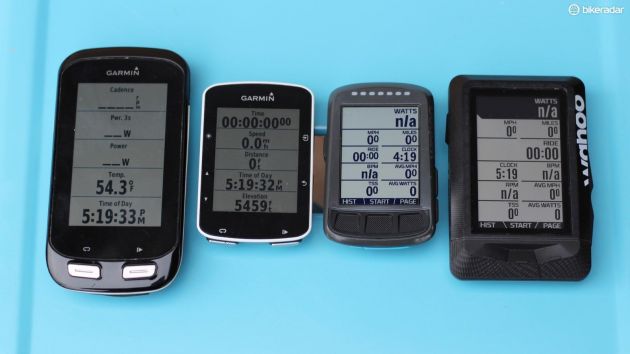
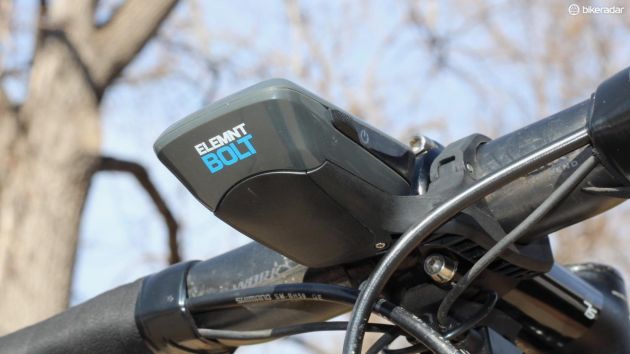
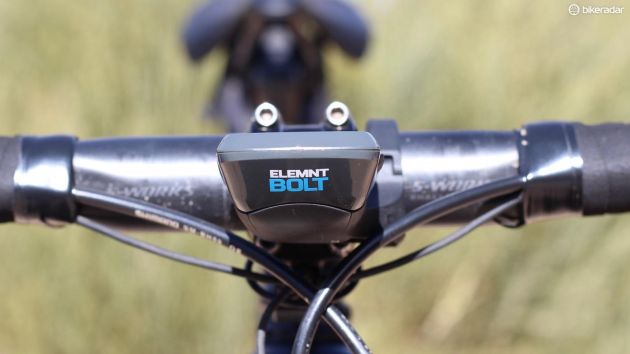
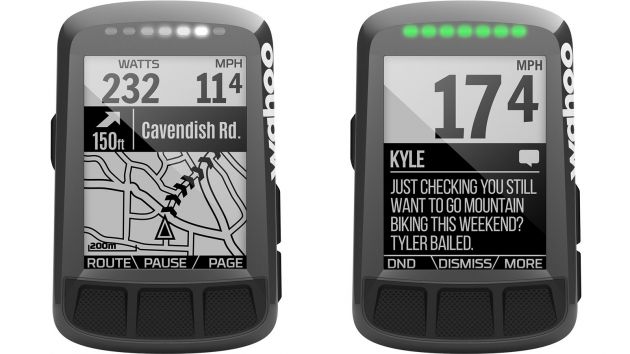
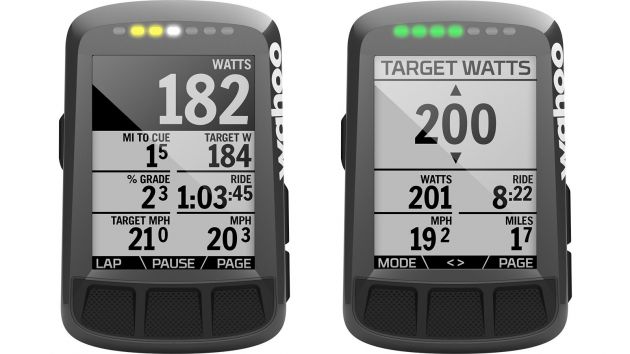
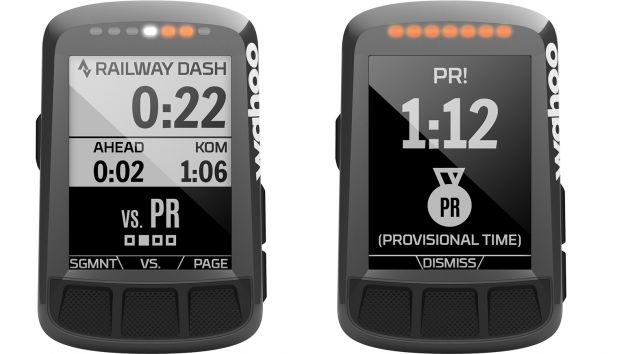
This article originally appeared on BikeRadar
While Wahoo claims its new Elemnt Bolt GPS computer and sculpted mount are aerodynamically superior to the comparably sized Garmin Edge 520 and 820 with their respective mounts, the real selling points for me are the Bolt's easy-but-robust functionality, compact size, killer battery life (triple the Edge computers when using navigation, in my experience) and decent price.
- Highs: Easy set up and on-the-fly adjustments to what you see on the screen; best-in-class battery life; easy-to-read screen; ANT+, Bluetooth and WiFi; aero design; competitive price
- Lows: Black-and-white maps and navigation aren't as robust as Garmin's; can't import workouts (yet); requires iPhone or Android smartphone for some set-up steps
- Buy if: You want a full-featured (and aero!) GPS computer with excellent battery life that doesn't cost the earth, and you aren't married to Garmin
The Bolt has all the normal metrics and variations on speed, time, distance, power, heart rate, elevation, etc., plus integration with a host of devices, from your smartphone and WiFi to eTap and the Moxy oxygenation sensor.
The Elemnt Bolt offers turn-by-turn navigation, Strava Live Segments, Live Track and a feature called 'take me anywhere' where you use your phone to search out a destination while out on a ride and then the Elemnt Bolt guides you there.
The Elemnt Bolt is easily configured with a smartphone app (iPhone or Android). Instead of punching a slew of buttons on a computer, you just use your familiar phone to tap and drag which data you want where and in what order.
The Bolt does have physical buttons, though. Two zoom buttons on the Bolt's right side serve not only for the map and elevation profile, but to increase or decrease the number of fields on any given data screen.
Three buttons on the face serve for basic functions like start, stop, select, dismiss, and a left-side button serves for power and to get into the Bolt's settings. The Bolt is quite similar to the original Elemnt in this way — just smaller, and with a single line of LEDs along the top instead of LEDs along the top and the left side.
Garmin maintains an edge (excuse the pun) over the Elemnt Bolt in terms of presentation of navigation, with a detailed color screen. Bolt displays routes from Strava Routes with a highlighted line on the map and blinking LEDs when you go off course, but turn-by-turn functionality requires use of a route from Ride with GPS or Komoots.
Garmin also lets you import interval workouts to follow with helpful graphics, which the Elemnt Bolt does not — yet.
But all in all, the Wahoo Elemnt Bolt is a better value proposition than the Edge 520 or the Edge 820 in an easy-to-use design. The one catch is that you have to be a smartphone user…
Wahoo Elemnt Bolt features and specifications
- Up to nine fields per page; side buttons increase/decrease which you see, in your order of preference
- 170+ data field options
- Layout configured via Elemnt app
- ANT+, Bluetooth and WiFi
- File uploads to your favorite sites wirelessly as soon as you end a ride
- 2.2in/55.9mm screen
- 2.1oz/60g
- 15hr claimed battery life (up to 20hr with LEDs turned off)
- Seven LEDs configurable for navigation, Strava Live Segments or targets for heart rate, power, speed and more
- Aero design with integrated mount
- Three top buttons, two arrow side buttons, one power/settings button
- No touchscreen
Elemnt Bolt and your smartphone
Wahoo Fitness started years ago as an iPhone accessory company. Founder Chip Hawkins was annoyed that he couldn't get data from his power meter and his GPS unit into a single computer. He figured that he already had a powerful computer — his iPhone — and he just needed a way to get the data there. Thus, the ANT+ iPhone dongle was born.
Fast-forward through a few products and the Elemnt Bolt still relies on a smartphone — Apple or Android — for initial set-up and other features.
If you are comfortable using your phone with various apps, you'll find the Elemnt app straightforward. Prioritizing which data goes on what page and in what order is easy, with tap and drag-and-drop functionality. Changes made on your phone are instantly made on the Bolt.
Annoyingly, you have to have the Bolt on and in range of your phone to fiddle with the settings. It would be nice if you could work 'offline' like with a Google Doc, and then have the Bolt update the next time it's turned on.
Once set up, you don't need to have your phone to use the computer. Using just the Bolt's buttons, you can do all the standard things like start/stop and scrolling through data screens, plus pairing with sensors like heart-rate monitors and power meters, and searching through existing Routes or chasing Strava Segments. When you end the ride, the Bolt will auto-upload to your home or other known WiFi signal if in range.
Still, having your phone paired to the Bolt while riding does add functionality like incoming text/call/email notifications, and the ability to wirelessly upload your ride when finished, wherever you happen to be. Also, this lets you use Live Track, where people can follow you online or on their own Elemnt computer and the new 'take me anywhere' navigation feature.
As with a newer Garmin Edge, you can configure the Bolt to automatically upload your ride to paired sites like Strava, TrainingPeaks, Today's Plan and more.
The Elemnt app's own post-ride analysis is pretty good and, like the computer, is easily configurable to show what you want, and where, including Strava Segment results.
Elemnt Bolt's aero design
My primary complaint with the original Elemnt is the size. It's chunky. The Bolt is smaller, but Wahoo also went to great pains to make the computer and the mount aero, too. Wahoo hired Dimitris Katsanis, who helped create bikes like Bradley Wiggins' world hour record bike and Team Sky’s 2015 and 2016 Pinarello race bikes, to help with CFD work on the Bolt.
Wahoo started with rough shapes — no buttons, no screens, just forms — which Katsanis tested through CFD.
The bottom lip of the computer tucks into the mount for an uninterrupted, curving surface.
The end result is a combination that Wahoo claims has 50 percent less drag than a Garmin Edge 520 on a Garmin mount when tested across a range of wind angles and mount angles. Wahoo claims the Bolt can save 1.5w over the Edge 520, equating to a 12.6s savings when doing 21mph over 40k.
On most bikes, the Bolt sits out away from the stem and handlebar because Wahoo wanted to ensure the mount would work with a range of set-ups. Personally, I’d like to see the computer closer to the handlebar.
The Bolt mount is noticeably more rigid than the original Elemnt's, which flexes noticeably when you press the buttons.
Elemnt Bolt navigation and excellent battery life
Wireless data transfer is an advantage that Elemnt computers have over Edge units.
Edge computers can upload ride files wirelessly (via your phone's Bluetooth on the 520, and Bluetooth or WiFi for the 820 and 1000), but require you to connect to a computer with a USB cable to drop and drag files for routes or workouts.
With Elemnt, you just sync routes wirelessly with the smartphone app; anything you've created on Strava, Ride with GPS or Komoots will autopopulate on the Bolt.
There is a catch for Strava users, though. Strava Routes will show up as lines on your map, but you only get turn-by-turn directions when using Ride with GPS or Komoots.
If using one of the latter, though, the navigation is generally very good. More specifically, the prompts are excellent and the maps are okay. While following a route, you can be on any page and prompts will pop up in the bottom third of the screen with text and an arrow, while LEDs up top flash to alert you to the proximity and direction of the pending turn. The data prompts also give real-time distance countdowns as you approach turns. Easy.
The black and white screen is excellent for alphanumeric data, but it gets somewhat muddled for navigation in street-dense areas at a certain zoom. I never missed a turn, but the solid black route line can get a little lost in the black and white outlines of other streets. Here, Garmin's color coding has a clear advantage.
On Garmin's Edge 820, the touchscreen allows you to look around on the map a bit; with the Bolt, you can only zoom in and out, but not pan around.
I found the battery life when using navigation to be far superior to that of Garmin Edge computers, which usually last a little over four hours from a full charge. By contrast, I did a 5.5-hour with the Bolt — with navigation and Strava Live Segments on the whole time — and the battery went from 96 percent at the start to 55 percent.
Also, the Bolt comes loaded with maps from seemingly all over the world. They aren't as robust as Garmin's (with points of interest and color coding), but they are functional.
Strava Live Segments on the Elemnt Bolt
If you don't care about Strava, skip this section. If you use Strava, though, the Elemnt Bolt allows you to chase Segment times (vs. your PR or the KOM/QOM), even while following a route.
Choosing which Segments show up is done by starring them on Strava. Then the Elemnt syncs with the app to update everything.
There are two ways to be alerted about upcoming segments. From any page, the Bolt beeps at you 200m from the start. If you generally know where the start is, such as your local go-to climb, this is an adequate option. If you're riding somewhere new, this doesn't really work. On a test ride in California I doubled back a few times after the Bolt beeped at me and I was on top of the start before I was ready to go. I would appreciate a 1km alert and then a 200m alert.
If you are on the Strava Live Segments page on the Bolt, you can see any favorited Strava Segments from a mile out. Once they pop up, you get a real-time distance countdown.
In both cases, the Bolt's Strava Live Segments page takes over, showing you the target time, your projected time and how far ahead or behind you are in relation to the average speed of the target time. Note that Strava doesn't provide precise target timing for any given section of the course, so if half the segment is downhill and the other half is uphill, you'll get a distorted sense of how you're doing.
Nonetheless, as soon as you finish you get your time ('Provisional', the screen tells you, like a race official who's been burned by announcing results too early) alongside the target time.
Garmin has a very similar feature. Although the beeping can get annoying if you have too many segments favorited, Strava Live Segments can be a fun diversion or motivator if used now and again.
On the Bolt, you can run Strava Live Segments while following a route. This is good for riding in new places. The default logic is for the navigation prompts to pop up over the bottom third of the Strava Live Segments page. This is good for staying on route, but it obstructs some of the data. (While some prompts you can dismiss, like text/call notifications, I couldn't figure out how to get rid of turn prompts, as the only option was 'mute'.)
Riding and training with the Elemnt Bolt
As with any product, your intended use determines a lot about whether or not you'll like the thing. By stepping down the size and giving some thought and design to aerodynamics, the Bolt will likely appeal more to competitive riders than the original Elemnt.
The day-to-day use of the thing is super easy. ANT+ and Bluetooth connect to your sensors and Bluetooth and WiFi instantly upload your rides. Press start, press stop, and all your data is on Strava, TrainingPeaks, Today's Plan, or wherever else you want it to go.
Similarly, routes and Strava Segments just show up on the Bolt; no USB cables and no remembering which folder to drop what file into required here.
One thing you can't currently zip into the Bolt wirelessly is a workout file. Garmin has had this capable on the Edge series for a while, but I never bothered with it when it required building an interval set in Garmin's ecosystem. Now that TrainingPeaks and Today's Plan offer a one-click export of workouts, though, I have appreciated the Garmin Edge's capability to walk me through intervals sessions, with color-coded graphics in addition to the straight data. Importing workouts is in the works for Wahoo, but it doesn't exist now on the Bolt.
That said, you can use a Best Bike Split file, which gives you target speed, power and time for different segments of a course, including LED indication for over/under/on target for your chosen metric. So, it seems like this same functionality could be applied to an interval workout, too.
On a more basic level, the interface is intuitive but fairly robust. By stacking up to nine fields of data on each of any given number of pages, you can pack of lot of info into your ride experience. At the same time, the zoom in/out buttons let you simplify any page down to two fields, if you just want to focus.
The screen resolution is crisp and easy to read in any light.
Bottom line: Elemnt Bolt is a robust computer at a good price
At a similar size and weight to the Garmin Edge 520 and 820 computers, the Elemnt bolt pulls ahead in price, battery life, smartphone compatibility and ease of data transfer. Wahoo's claim of aerodynamic superiority isn't hard to believe, looking at the units.
Garmin still holds an edge, ahem, in presentation, whether that's third-party IQ apps with color-coded tachometers or just the leading-standard map navigation. While numbers and text are easy to read on the black-and-white Bolt screen, the maps can get a little muddled, with black arrows blending into the black road outlines.
But if you are looking for a robust GPS computer that's a breeze to use and a long-haul trucker on battery life, the Elemnt Bolt is a great option.